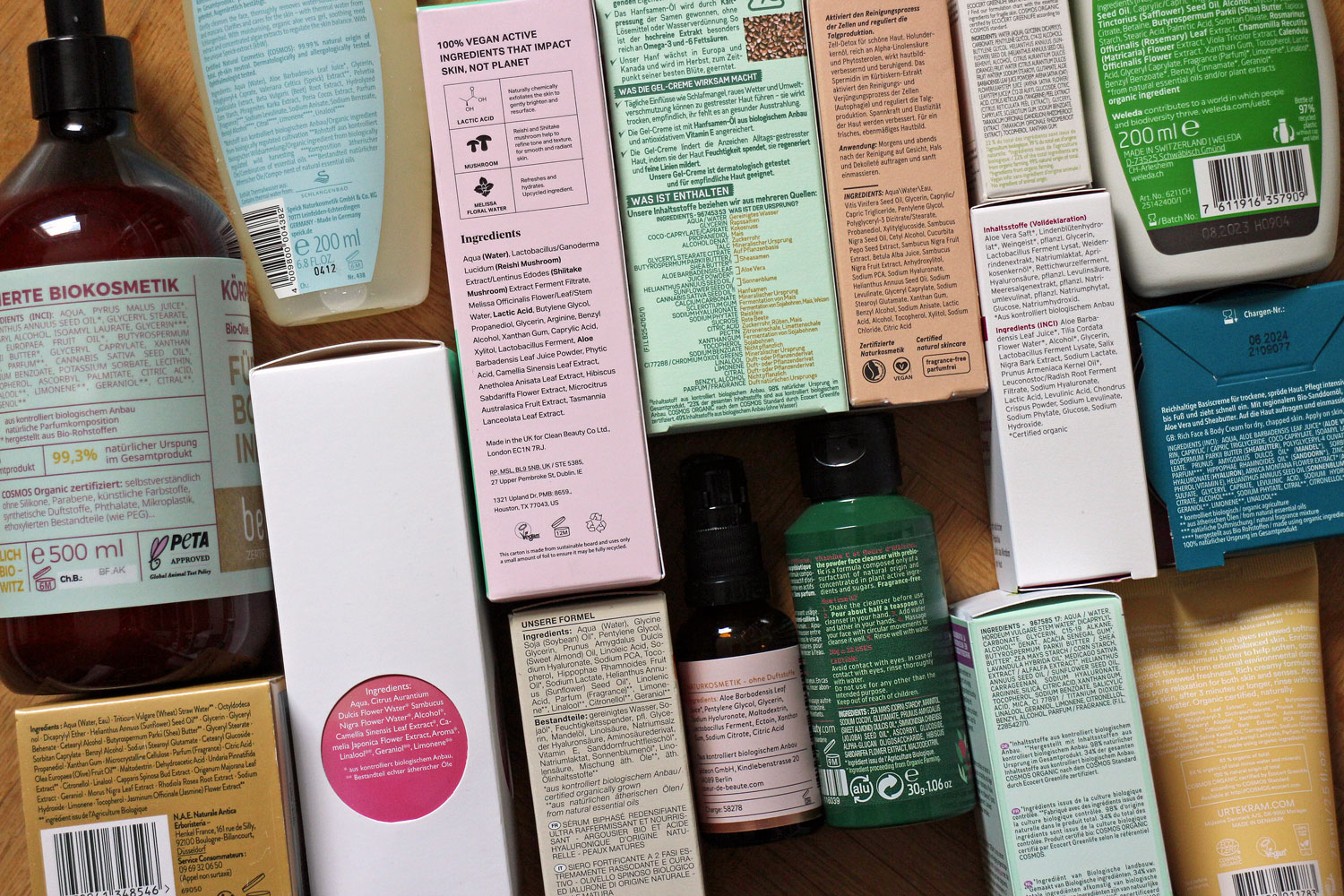This is a translation of my German blogpost Hinter den Beauty-Kulissen… ProTec Ingredia GmbH Proudly Presents: Was die INCI aussagt und was nicht. Enjoy!
In cooperation with ProTec Ingredia GmbH // Before I buy a beauty product I automatically look at the INCI. After all, I want to find out what the product might be like and checking out the ingredients is the first step. However, I also know that I can never truly judge a cosmetic product based merely on its ingredients declaration: The INCI can‘t tell me what the texture will feel like on my skin or whether the formulation is effective. And there is other product information that is important to me when I buy cosmetics that I cannot find in the INCI either.
So this chapter of my beauty serial will be all about the INCI – about its history, structure and informative value as well as its limitations. I’ve also spoken to three experts in the field who have contributed some fascinating insights into this topic.
What is the INCI
The English abbreviation INCI stands for “International Nomenclature of Cosmetic Ingredients” and identifies the legal requirement for the full disclosure of ingredients contained in cosmetic products. The INCI listing has been mandatory in all countries of the European Union (EU) since 1997. It forms a part of the European regulatory framework for cosmetic products – Regulation (EC) Nr. 1223/2009 – which specifies the ingredients that are allowed in beauty products. Each cosmetic product sold in the territory of the EU must have the full INCI list of its ingredients displayed on the packaging.
The EU’s CosIng database lists all ingredients that are approved for use in the EU with their official INCI names. Plant-based ingredients are designated by their botanical name (usually in Latin), the part of the plant it is derived from and the type of material. Avena sativa Kernel Oil, for example, is the official INCI name for oat kernel oil while Magnolia officinalis Bark Extract is the INCI term for magnolia bark extract. Synthetic ingredients are usually designated by their English or chemical terms, like ‘tocopherol’ for vitamin E.
The structure of the INCI declaration
The ingredients of a cosmetic product are listed in descending order of amount. This means that the ingredients used in the greatest amounts will be mentioned first. Ingredients that are contained in amounts of less than 1% can be listed without a specific order. However, there are 26 components of fragrance ingredients classified as allergens that must also be listed in the INCI, at least if they are included in amounts above a certain quantity.
Any colourants are mentioned at the very end of the INCI declaration. They are listed with their respective CI (Colour Index) numbers, such as CI 77491 for red iron oxide. Nanoparticles must also be highlighted, with the term ‘nano’ in brackets behind the respective ingredient.
How does a new raw ingredient receive its INCI name?
The CosIng database contains around 30.000 names for cosmetic ingredients. But what happens when a new ingredient is developed that is not yet listed in the database? I ask Beata Brawand, Head of Sales at Swiss ingredients manufacturer Mibelle Biochemistry. Beata explains that if a manufacturer launches a novel ingredient they can apply for a new INCI name. The proposed name must be put together as outlined above so it precisely identifies the new ingredient. The proposal is then checked by the cosmetics commission and if the application is successful, the new material receives its official INCI name and is entered into the database. Only then can the new raw ingredient be used in a cosmetic product.
What information the INCI doesn’t convey
Consumers often find it difficult to understand the INCI declaration and not just because of its complicated terminology. For example, the INCI doesn’t list the precise ingredient amounts that are contained in a beauty product. Whether the ingredient listed in second place of the INCI declaration accounts for a 10% or 30% amount is something that is only written down in the product formula.
Active ingredients can also differ in terms of quality. The INCI doesn’t specify how highly concentrated the different components of an ingredient are. The manufacturing process of the ingredient isn’t mentioned in the INCI either: The algae extract listed on a product can refer to active ingredients with quite different properties, as each extraction method can yield different components.
Birgit Gertchen, Senior Sales Manager at ProTec Ingredia, highlights another important aspect of why it is so difficult to judge the efficacy of a product based on its INCI: “There are different international legal frameworks for the ingredient declarations of cosmetic products. Some active or raw ingredients have different regional INCI names because a specific INCI name might not be approved in all countries. That is also the reason why many cosmetic manufacturers prefer to use more generalised INCI names, such as ‘arginine’ or ‘lysine’. These are internationally recognised terms derived from certain components of the respective extracts. However, sometimes a company might select a generic INCI name such as ‘sodium carrageenan’ so its competitors cannot draw conclusions about the raw ingredient used in the active. ”
And there are other technical factors that make a cosmetic product effective which can rarely be deducted from the INCI. The pH value of a formulation, for example, is not usually mentioned in the INCI, nor is the type of ‘delivery system’ used in a product to transport the active ingredients into the skin.
Gabrielle Moro, Head of Marketing from Codif Technologie Naturelle, explains it like this: “The INCI only gives a name. In a way, it resembles the list of pupils in a school: You can identify each pupil by his first and last name. However, the INCI doesn’t say where the pupil comes from, how he has reached his current status or what he can do well.”
Can the INCI tell me if a product is sustainable?
The INCI doesn’t really offer a lot of the information that consumers search for these days, says Gabrielle: “The INCI doesn’t specify where the ingredient was sourced (is it regional or did it come from the other side of the world?), how it was manufactured or the size of the CO2 footprint associated with its manufacturing process. You also can’t tell whether the ingredient is based on natural resources, whether it’s from certified organic agriculture or if it is vegan. The INCI doesn’t provide information about the biodegradability or ecotoxicity of a specific ingredient either.”
More transparency through communication
These days many beauty consumers look at the INCI declaration before buying a product. In
fact, Birgit Gertchen believes that the INCI is an important marketing instrument. She says: “Active ingredients such as the INCI algae complex Emiliania huxleyi Extract or Coffea arabica Seed Extract which is a by-product of the global coffee production convey an attractive image and can help to highlight the claim of a beauty product.”
In the end, the INCI can only ever offer a basic guideline. To truly judge the efficacy or sustainability of a beauty product you need more information than just the list of ingredients. And this is where cosmetic manufacturers must become more active and invest in meaningful and transparent communication. This communication should not just take place on the product packaging either – the company or brand website or a brand’s social media channels offer much more space for detailed explanations about what is included in a product, where the raw ingredients come from, what skin types it is suitable for and what its effects are.
In the next chapter of my Beauty Soap we’re taking a summer-themed beauty trip. Stay tuned!



